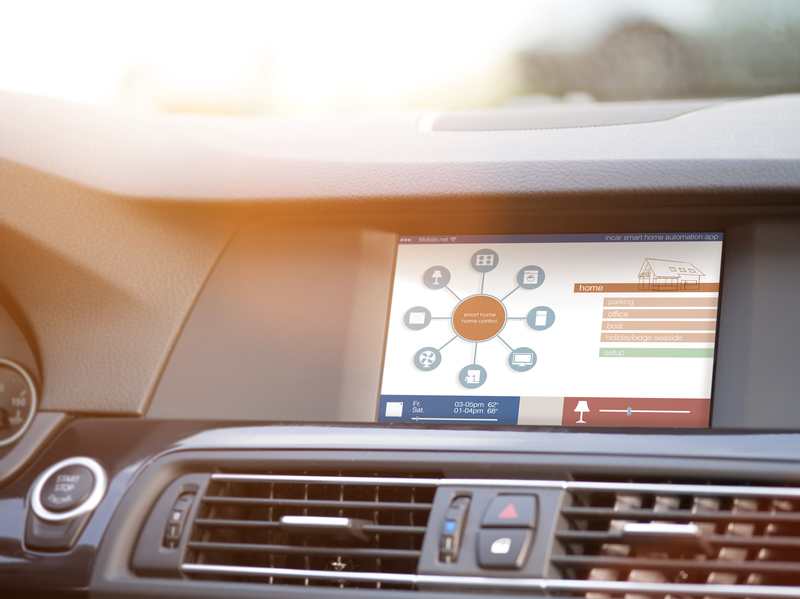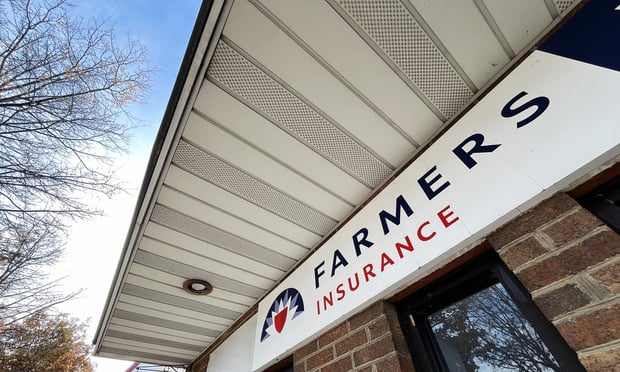The first federal bill that deals with automated cars recently cleared the United States House of Representatives Energy and Commerce Committee, and is now pending action before the full House.
The "Safely Ensuring Lives Future Deployment and Research In Vehicle Evolution" (SELF DRIVE) Act aims to facilitate the testing and distribution of highly automated vehicles (HAVs).
The bill (H.R. 3388) was originally introduced to the House Energy and Commerce Committee as the "Designating Each Car's Automation Level Act" (DECAL) Act. But during markup on July 25, 2017, it was replaced with the SELF DRIVE Act. However, it still retains its designation as H.R. 3388.
Related: Insuring autonomous vehicles
The SELF DRIVE Act sailed through the committee with a 54-0 vote in favor of its approval. While the Act clearly has strong bipartisan support, it still needs to pass through both the full House and Senate, and be signed by the President, before it becomes law.
Three key proposals contained in the SELF DRIVE Act should facilitate the development and adoption of HAVs:
— First, it proposes to exempt HAVs from certain Federal Motor Vehicle Safety Standards (FMVSS);
— Second, it proposes to preempt certain state laws; and
— Third, it proposes to require HAV manufacturers develop a written cybersecurity plan for HAVs.
Related: Are we safe drivers? Apparently not…
|Vehicle safety redefined
|In general, passenger vehicles are required to adhere to the Federal Motor Vehicle Safety Standards (FMVSS). However, HAVs appear to render a number of these safety standards obsolete or completely inapplicable.
For example, Standard No. 111 dictates the performance and location of the rearview mirror. But rearview mirrors are obviously not necessary for HAVs that rely on rear-facing sensors instead of in-cab mirrors. Consider also Standard No. 207, which provides requirements for seats, their attachment assemblies and their installation.
When HAVs no longer need a human driver, the driver's seat required by Standard No. 207 will also be unnecessary. Automakers such as Mercedes-Benz are already designing cabins for HAVs with unique seating positions that lend themselves to a more conversational in-cab environment.
Several other examples of FMVSS do not make sense in the context of HAVs. Continuing to mandate compliance with all of them would create an additional, unnecessary expense for Original Equipment Manufacturers (OEMs). Superfluous equipment would take up valuable real estate in the vehicle that could be used for additional cameras, sensors and other specialized equipment that HAVs do need to operate safely.
To address this problem, the SELF DRIVE Act proposes to increase the number of FMVSS exemptions that the Secretary of Transportation can grant to HAV manufacturers over time. In year one (12-month period), the bill would allow 25,000 exemptions per manufacturer. In year two, that figure would increase to 50,000 exemptions, and in years three and beyond, it would increase to 100,000 exemptions. In addition to increasing the number of exemptions allowed for HAV manufacturers, the Secretary of Transportation could grant exemptions for an extended period of up to five years.

Because HAVs will rely entirely on computer systems to navigate, adequate cybersecurity measures will be necessary for them perform safely. (Photo: iStock)
Automakers want direction
The regulation of HAVs currently consists of only a patchwork of state laws, which means HAV manufacturers must navigate a shifting landscape as individual states create new requirements. This state of affairs is increasingly untenable as HAVs make their way to the market and, more and more, travel across state lines.
To ameliorate this problem, the SELF DRIVE Act would preempt states from creating laws and regulations dictating design, construction or performance of HAVs. However, it would permit states to continue regulating vehicle registration, licensing, insurance, driver education and training, and other related areas that are not specific to HAVs. Also, it is important to note that the Act "does not exempt a person from liability at common law."
However, the SELF DRIVE Act's distinction between "design, construction or performance" regulations and other kinds of regulation may lead to confusion. For example, New York State requires its drivers to keep at least one hand on the steering wheel at all times. Yet, as discussed above, OEMs are designing seating that will allow front-seat occupants to rotate and face rear-seat occupants and may even elect remove the steering wheel altogether. Arguably, then, New York's "one hand on the wheel" law constrains HAV design and construction and would be preempted by the SELF DRIVE Act. On the other hand, the New York law dictates what a driver must do, and hence could fall under the "driving education and training" category, which states would remain free to regulate.
Consider also Michigan's SAVE Act, which permits OEMs to test automated vehicles on state roadways, but does not permit ride sharing companies like Uber and Lyft to do the same. This does not appear to be a limitation on the design and construction of HAVs as such, but it nonetheless hinders the development and deployment of HAVs.
Related: Emerging risks in auto technology
|Cybersecurity concerns
Because HAVs will rely entirely on computer systems to navigate, adequate cybersecurity measures will be necessary for them perform safely and gain the confidence of passengers. The SELF DRIVE Act appears to promote HAV cybersecurity without taking an overly prescriptive approach on how OEMs must accomplish cybersecurity objectives.
Specifically, the current version of the SELF DRIVE Act would require automakers to:
- |
- |
- |
- Develop a process for identifying, assessing and mitigating "reasonably foreseeable vulnerabilities" from cyber attacks;
- Take preventive and corrective action to mitigate against vulnerabilities in a highly automated vehicle or a vehicle that performs partial driving automation, including incident response plans, intrusion detection and prevention systems, and updates to those process based on changed circumstances;
- Identify an officer or other individual as the "point of contact with responsibility for the management of cybersecurity"; and
- Develop a process for employee training and supervision during the implementation and maintenance of the installed self-driving systems.
- |
- |
Related: No business is totally safe from cyber attacks
|Looking ahead
The SELF DRIVE Act represents a significant first step for federal regulation of HAVs, and would provide welcome relief for OEMs that are currently faced with irrelevant or inconstant requirements under the FMVSS and state law. Further, it encourages a forward-thinking approach to cybersecurity, which will be essential to both HAV safety and consumer trust.
Michael Nelson is a partner at Eversheds Sutherland (US) in the New York office. Trevor Satnick is a data privacy and security consultant there, and Tony Ficarrotta is an associate. Eversheds Sutherland will continue to monitor the SELF DRIVE Act closely as it makes its way through Congress.
See also:
Want to continue reading?
Become a Free PropertyCasualty360 Digital Reader
Your access to unlimited PropertyCasualty360 content isn’t changing.
Once you are an ALM digital member, you’ll receive:
- Breaking insurance news and analysis, on-site and via our newsletters and custom alerts
- Weekly Insurance Speak podcast featuring exclusive interviews with industry leaders
- Educational webcasts, white papers, and ebooks from industry thought leaders
- Critical converage of the employee benefits and financial advisory markets on our other ALM sites, BenefitsPRO and ThinkAdvisor
Already have an account? Sign In Now
© 2024 ALM Global, LLC, All Rights Reserved. Request academic re-use from www.copyright.com. All other uses, submit a request to [email protected]. For more information visit Asset & Logo Licensing.








